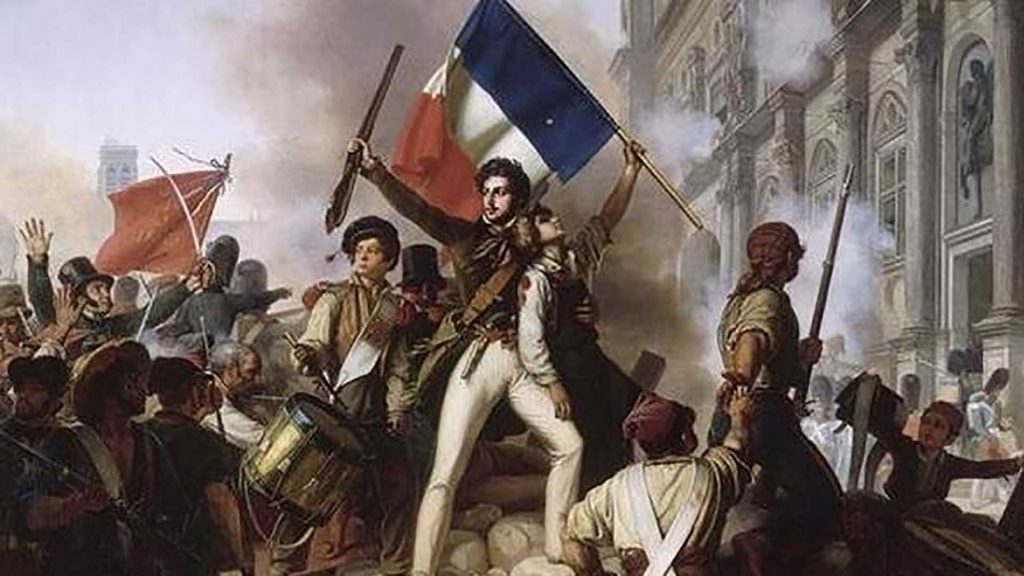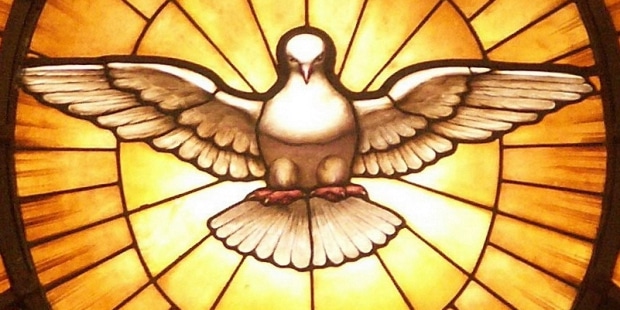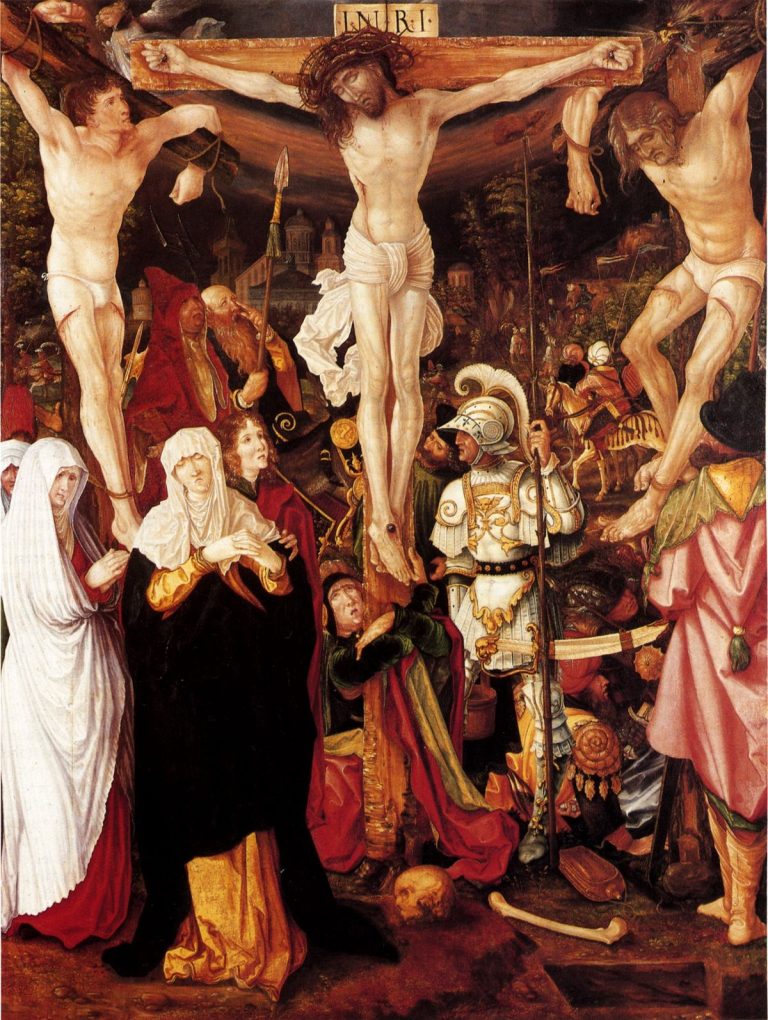Christian persecutions and what were the first
The apostles began the evangelizing task after the departure of the Master and it was when the first Christian persecutions began.
And he told them: “Go into all the world and preach the gospel to every creature (Mark 16:15).
There are many people in the world who are persecuted, mistreated and killed for religious reasons, including Christians, a situation that continues to this day.
If you want to know a little more about the persecutions of Christianity , be sure to read this article.
The Christian persecutions
When the first Christian persecutions are mentioned, we are talking about the harassment and follow-up suffered by the believers of Christ, in the time that followed his passion and death, that is, the persecution of his church.
Starting with Jesus and after his ordeal and death, Christians suffered persecution and violence at that time.
When referring to the term persecution, it encompasses all those acts that imply harm or mistreatment of others, for example it can refer to:
- arbitrary arrests
- incarcerations
- beatings
- torture and mistreatment
- executions
- Exterminios.
This also includes the confiscation or destruction of private property and incitement to hatred of those who profess the Christian religion.
Many of the apostles and closest followers of Jesus were imprisoned, mistreated and killed by the Jewish leaders, and the Roman authorities, the fate of many was tragic and painful:
-Stephen, was considered the first martyr, in the New Testament it is indicated that he was stoned to death:
“ But Stephen, full of the Holy Spirit, looking up to heaven, saw the glory of God, and Jesus standing at the right hand of God, and he said: Behold, I see the heavens opened, and the Son of Man standing at the right hand of God.
Then they covered their ears with a loud voice and rushed at him together.
And driving him out of the city, they stoned him; and the witnesses laid their clothes at the feet of a young man named Saul. And they stoned Stephen, while he called and said: Lord Jesus, receive my spirit.
And kneeling, he cried out with a loud voice: Lord, do not hold this sin against them. And having said this, he slept .”
-James the Elder , the older brother of the apostle John, was beheaded with a sword in the year 44 after Christ, by order of Herod. He was the brother of Saint John the Evangelist and preached in Jerusalem and Judea until he was arrested and killed.
-Philip , was the one who evangelized with perseverance and diligence in Asia. Born in Galilee, he was imprisoned in Heliopolis (Phrygia) and after being mistreated, flogged and imprisoned for some time, he was condemned to the cross in the year 54 after Christ.
-Mateo , born in Nazareth, worked hard in Parthia and Ethiopia, where he was assassinated in the city of Nadabah, in the year 60 after Christ. He was a writer of one of the gospels that make up the New Testament, in Hebrew.
-James the Less , known as James, was considered the brother of Jesus on his father’s side.
It is associated with the figure of that Santiago to whom the risen Lord Jesus appears (1 Cor 15, 7).
He wrote the Epistle or book of James and worked hard for the Christian church in Jerusalem. He also preached in Palestine and Egypt.
At the age of ninety-four he was stoned and ill-treated by the Jews, finally being killed by a blow to the skull.
-Matías , the follower of Christ who was left in place of Judas, was arrested and sentenced to die by the Sanhedrin. This apostle was stoned by the Jews and later beheaded in Jerusalem.
– Andrés , was the one who had the honor and privilege of being the first disciple of the Divine Master Jesus, together with Saint John the Evangelist, who in turn were first disciples of John the Baptist.
The story tells that Andres died as a martyr in Achaia, Greece, in the town of Patra, due to the fury unleashed by Governor Aepeas, because his wife and brother converted to Christianity despite his refusal.
Andrés was condemned to die crucified, however his request was that the cross where he would be executed, was different from that of Christ, as a symbol of respect for his master.
He was crucified in an X that is still known as the cross of Saint Andrew, in the year 63 after Christ, under the government of Nero.
-Bartholomew , history indicates that he was a missionary in Armenia. His name means Son of Tolmai or Talmai and some scholars assume that he may have been the only one among the disciples who had royal blood or a noble family.
His first name was probably Nathanael and the second the most used by him, Bartholomew, whom Jesus called ” a true Israelite, in whom there is no guile ” (John 1:47).
He was an adventurous and enthusiastic missionary of the Church, he worked with Philip in Phrygia and Hierapolis, he also settled in Armenia for a time.
He evangelized in India, where he was cruelly murdered for the faith he professed, he was skinned alive with knives, which is why in ancient paintings he appears with his skin on his arms like a coat.
-Thomas , the unbelieving disciple, preached the teachings of Christ in parts of Parthia and India. This apostle is credited with the evangelization of the East, being very important in Syria and India.
Such was his influence and importance that several hymns to Thomas have been preserved, in codices from the 8th and 9th centuries, attributed to Syrian writers.
His hard work unleashed the wrath of the pagan priests and made him a victim of Christian persecution, he died pierced with a spear.
-Lucas traveled with the apostle Paul through several countries and history indicates that he was hanged. The Gospel writer named after him and Acts was hanged from an olive tree by believers of another religion in Greece.
-Simon the Zealot evangelized in Mauritania, Africa and even, it is believed, in Great Britain, where he was condemned to crucifixion in the year 74 after Christ.
-John , the beloved disciple wrote the Gospel of John, also took the Christian teachings to Asia Minor.
He lived in exile on the island of Patmos, where he wrote the Apocalypse. He died naturally in the year 100 after Christ, being the only one who did not perish by violence.
Peter is the most mentioned and well-known apostle in the New Testament, considered by Catholics as the first Pope.
He evangelized from Jerusalem to Samaria, Palestine, moved to Antioch where he founded the church, and headed to Rome, where he presided over the church until his death.
This apostle ended his days in Rome, during the mandate of Nero, the story cites that he was crucified, placed with his head down and his feet up, since he was considered unworthy to die in the same way as his teacher.
” Peter, the first of the apostles, having often been seized and thrown into prison and treated with ignominy, was finally crucified in Rome .” Peter of Alexandria, Bishop of Rome.
-Judas Tadeo, known as Tadeo or Judas de Santiago, is mentioned very few times in the New Testament, so there is very little information about him.
He is represented with a mace or mallet, since, according to the tradition of the Catholic Church, he suffered martyrdom with said instrument.
However, there is also another version that assumes that he was crucified in Edessa in the year 72 after Christ.
From the first century, the Christian religion was carried to almost all parts of the world known to the ancients and it was always very common that everywhere it had to overcome great obstacles and many contradictions.
The persecutions were generally provoked by the Roman emperors, by the particular hatred of the Jewish magistrates, or also by the uprising of the people.
Some Catholic historians count ten violent and bloody general Christian persecutions, these occurred under the emperors:
- Nero (64 – 68)
- Domian (93)
- Trajan (107)
- Marcus Aurelius (164)
- Seventh Severus (199 – 204)
- Maximin (235)
- Decio (250)
- Valerius (257 – 258)
- Aurelian (273 – 275)
- Diocletian and Maximian (303-311)
This figure has become, in a way, an orthodox number, which the whole world has accepted, but history disputes it very seriously and takes into account only authentic facts and documents.
In fact, for many it is very difficult to admit that a general persecution could have been directed against a specific religion, when its followers were scattered in some cities.
In the early days, there must have been only a few local and accidental events, produced by very specific or particular causes.
It is stated that some possible causes of these persecutions were:
1-The qualification of heretics attributed by the ancient Jews, since it was very different from the traditional Jewish doctrine, since the idea of the messiah, God made man did not reconcile with its strict and ancient monotheistic style.
2-The interest of the Jewish leaders in maintaining their good relations with Rome and their political power even when it was limited, guaranteeing order and absolute civil obedience, something that the preaching of the Christians was convulsing.
3-On the part of the Romans, they considered that the Christian teachings and the figure of the King of the Jews were a call to rebellion to overthrow them, especially because that was the idea that the Jewish opponents planted with respect to the Christian doctrine.
Christian persecutions and Rome
During the first three centuries, Christians were persecuted, all ordered by the Roman emperors who looked after their interests and those of the important classes, in addition to their traditional religions.
The Romans originally assumed that Christianity was a Jewish sect, so aside from Nero and Domitian persecuting them at certain points in history, they were not the main target of the Empire.
The first Christians during the initial period of the first century were mostly persecuted and attacked by the scribes and Pharisees, authorities of Judaism, being much more hostile than the Roman authorities.
Later, during the second half of the 1st century until the 4th century, they confronted the Roman Empire, who began to see them as rebellious Jews, willing to alter the political and social order. Idea that was promoted largely by the Jewish leaders.
Many Roman historians mention Christ and his teachings as the cause of many revolts, cataloging them as ” a sect of men of a new and evil superstition” .
Some of the crimes described by Roman historians and for which Christians were held responsible at that time were heinous and therefore caused the wrath of the crowd:
“That in the nocturnal congregation we sacrifice and eat a child. That in the blood of the slain child we dip the bread and soaked in the blood we eat a piece each.
“That in the darkness caused by the struggle of dogs, pimps of clumsiness, we impiously mix with sisters or mothers.”
Many associated the meetings of Christians with rites of other religions or cultures, such as: the mysteries of Eleusis and Samos, the mysteries of Cibeles, Isis or Mitra.
On the other hand, certain beliefs of the time collided with Christian precepts, for example the Roman custom of erecting statues and monuments of the emperors who had to be respected and venerated.
The Roman emperors proclaimed themselves as gods or sons of gods, lord of lords, and therefore their subjects had to respect them and pay homage, for example, worship or kneel before their statues in any of the cities where they were found.
When the Christians refused to do so, because their belief indicated that the only Lord of lords and the only son of God was Jesus, the Romans took this attitude as a political rebellion against the Empire.
This provoked the wrath of the rulers who in many cases unleashed Christian persecutions and martyrdoms against them at that time.
The Christian ideology and doctrine was considered in most cases as subversive.
These became for the Roman authorities a threat to the Roman social order and especially to the favored classes with that same order, the rich and privileged.
An example of this attack against the social hierarchy would be the idea that “We are all children of God” which would make us brothers and equals, deserving of respect and equality.
This belief in the divine filiation of all men and women collided with a society where differences were so marked, where human dignity depended on status, a slave society
The idea where goods and wealth should be available to everyone, was a threat to many powerful and privileged people of the empire.
Christianity was aimed at the despised, humble, ignored, the poor and slaves, who because they were large groups could wreak havoc on an empire already in crisis, so the authorities had to prevent it from expanding at all costs.
There were great persecutions on the part of the Romans against those who professed Christianity, directed by the emperors and the authorities of the time and in many cases supported by the crowds:
Nero
The church had already suffered much from the Jews and the pagans, but these persecutions were not general. Emperor Nero was the first to use sovereign power against the Christians.
This cruel ruler, irritated by the fact that several people in his palace had abandoned the worship of idols, published an edict forbidding the embrace of the Christian religion: it was during the fire that devoured almost the entire city of Rome.
Nero had burned the city down for the sheer joy of watching it burn, and then rebuilt it more magnificently. He blamed this crime on the Christians and made them suffer the most cruel tortures.
Some were wrapped in wild animal skins and exposed to dogs to be eaten. Others, dressed in robes covered with resin and sulfur, were attached to poles and used at night to light circus games.
Many inhabitants denounced the Christians, to avoid being compromised and the consequences that this could have caused to their communities.
They avoided having the privileges that had been granted to them by the Romans withdrawn, for example, residing in the empire, with the freedom to practice their religion there.
domitian
The Christians who were moderately safe for a time under the reigns of Vespasian and Titus, were again persecuted by Domitian.
Among the multitude of people of all ages and all conditions that this emperor killed, are his closest relatives to Flavio Clementes and he banished his wife, Flavia Domitilla, accused of atheism for having converted to Christianity.
Domitian, offended by everything he did not understand, became anxious, cruel and began to persecute honest people, citizens who lamented the lack of freedom, the Stoics who preached virtue.
“To think freely was a crime in their eyes” (Tacitus; Historiae I; 1). Naturally, Christians were greatly threatened by such a regime, for its law stated that: “No Christian, once brought before a court, is exempt from punishment without renouncing his religion.”
Trajan
Trajan, whose history praises wisdom and mercy, did not issue new edicts against the Christians, but he was relentless in applying the laws already imposed by his predecessors, enforcing them in different parts of the empire.
Under his reign, some of the victims of the Christian persecutions, which are said to have been many, are:
- Saint Simeon, Bishop of Jerusalem
- Saint Ignatius, Bishop of Antioch
- Pope San Clemente
Adriano
Some authors indicate that this emperor would have accepted Christ in the number of the gods of the Roman pantheon, dedicating a temple to him.
In addition, he authorized a rescript that indicated that the regulations and legal norms that regulate the procedures against the Christians were the responsibility and decision of the provincial governors.
In the case of proving an illegal act after a judicial investigation, a legal punishment must be imposed.
However, the intervention of official officials is not authorized when it comes to false or unfounded complaints and through public altercations, urging that any complaint that is not true be punished.
Even with this type of regulation, in his reign there were also some martyrs, among whom were Saint Mario, Saint Eustace, his wife and children, Saint Getulio, Saint Symforosa of Tivoli and their seven children, the seven Tiburtini martyrs, the Pope Saint Sixtus, etc.
Antonino Pio
Hadrian’s successor showed according to many writers the same policy of tolerance towards Christians as under the reign of Trajan and Hadrian.
He prohibited the accusation or denunciation of Christians on the charge of atheism, especially in the area of Asia Minor, he also directed several edicts directed at the Greek peoples, trying to avoid their persecution.
He was considered by many scholars on the subject and certain Christian writers, as a “friend of the new faith”, which did not encourage Christian persecution.
However, even so, under his rule there were some executions, such as that of the holy elder Polycarp.
Marcus Aurelius
Emperor Marcus Aurelius, who was extremely superstitious, did hear the slander with which Christians were accused and renewed the edicts of Christian persecution and unleashed harsh repression against them.
One of the first and most serious acts of violence was the persecution in Lyon, in the summer of 177.
For these days they had gathered in Lyon for the festivities of the imperial cult and a wave of attacks and monitoring of Christians was unleashed, who were accused of atheism.
They were mistreated, insulted and imprisoned, brutalized and the vast majority sentenced to death for standing firm in their beliefs.
In this stage there were deaths, assaults, robberies and stonings, many Christians were tortured and sentenced to work in the mines.
Among the best-known martyrs of the Christian persecutions of this stage are: Saint Justin and his companions, Potino (Saint Pothin, bishop of this city) Blandino (Saint Blandine), among others.
Septimius Severus
The emperor Septimius-Severus appeared at first favorable to the Christians, but in the ninth year of his reign he issued bloody edicts against them, which were rigorously executed.
These Christian persecutions began in ancient Egypt, from where they spread to Carthage and even Gaul.
Many writings indicate that daily martyrs were executed, burned or beheaded, using as a pretext that the Christians attracted the plague and the famine that afflicted the empire at that time.
Among the victims are: Saint Irenaeus, Pope Saint Victor, the young women Félicité and Perpétue (Happiness and Perpetual), Saint Cecilia, among others.
Maximin the Thracian
Christian persecutions were mainly directed towards priests and bishops, because they did not want to depopulate the provinces by executing all the faithful.
Churches and all Christian places of worship were burned and destroyed. The then pope, Pontianus, died in exile and Saint Anther, who was the successor, died in prison. The persecutions lasted a little more than three years.
Decius
From the beginning of his reign, Emperor Decius published a bloody edict against the Christians, which was executed with extreme rigor.
Many of the devotees fled to the deserts to escape Christian persecution, including Saint Paul, the hermit.
Some historians affirm that his decree ordered public sacrifices, which represented an affirmation or testimony of subordination and fidelity to his person, to the authority and to the existing order.
Decius sent commissions that went from one city, town or village to another reviewing and supervising that his edicts were respected.
They verified that the sacrifices were made and in turn delivered the certificates to those who carried them out.
Many Christians were able to save themselves from punishments and sentences by making public sacrifices, placing incense as an offering to the Roman gods.
Those who refused to comply with the edict were accused of lack of faith and religiosity, punishing with imprisonment, torture and death.
Some Christians retired to the countryside and others bought the certificates known as libelli.
Many of the municipalities near Cartago came into conflict with those Christians who lapsed or gave in to these pressures.
Among the many martyrs of these persecutions, we find: Holy Pope Fabien, Saint Alexander, Bishop of Jerusalem, Saint Pione, Bishop of Smyrna, Saint Águeda, Mélitène, Saint Polyeucte, among others.
Some writings made by Cipriano, bishop of Carthage, left information regarding the persecution of Christians and the consequences that this left in the Carthaginian Christian community.
valerian
Valerian was relentless in his persecution and punishment of Christianity. Many believers had to pay heavy fines, others were sentenced to exile and death.
He issued edicts that caused the martyrdom of large numbers of Christians, many forms of torture were employed to shame and torment those who claimed to be Christians, and he served in many entertainment opportunities for rulers and their guests.
Some of the known victims of this emperor were: the popes Saint Etienne and Saint Sixtus II, the deacon Saint Laurent; San Cipriano, bishop of Carthage, the young Cyril, of Caesarea, among others.
The persecution of Christians by this emperor culminated in his capture in Persia, being succeeded by his son Gallienus, who revoked a large number of edicts
Aureliano
This emperor, who for a long time favored the Christians, changed his behavior at the end of his life and issued edicts against them that fortunately had not yet reached the distant provinces when he passed away.
One of his victims was Pope Saint Felix. After Aureliano’s death, there was a period of peace of almost three decades.
Diocletian and Maximian
After these years of peace, new persecutions arose, a time called the era of the Martyrs, because it was long and violent, much more than the previous periods.
He made public a variety of edicts where the legal rights of Christians were eliminated, in addition to ordering them to bow to the cults and practices of traditional religion.
These were four edicts during this mandate:
1-Ordered the demolition of churches, the burning of sacred books and the deprivation of civil rights of Christians.
2-The imprisonment of the heads of the Church was indicated
3-Authorized the use of torture against priests who refused to sacrifice to pagan idols. If they complied with the order, they could be released.
4-Extended to all Christians and not just the cleric the obligation to make sacrifice. This edict made it mandatory that all Christian men, women and children should congregate in public places to carry out a collective sacrifice. Under threat of execution if they objected.
Among the martyrs of these Christian persecutions, we cite:
Saint Agnes, Saint Sebastian, some soldiers of the Tebia legion and Saint Maurice, Saint Quentin, Bishop Saint Victor, the Bishop of Saint Lucien, the brothers Donatien and Rogatien and the deacon Saint Vincent, among those who know each other.
However, after this last great persecution and struggle of Christian believers, paganism admitted defeat.
Galerius, in the edict of the year 311, granted the right to freely exercise Christianity and not be persecuted for their religion.
Constantine and his conversion
The persecution of the Christian religion lasted for almost three centuries, however, it was gaining more and more followers, among them and perhaps one of the most remembered was the Emperor Constantine.
Constantine’s conversion was hailed by many as a miracle. The imperial crown was disputed by the tyrant Maxence, who had become the owner of Italy and Africa.
Constantine arrived in Rome with the intention of fighting against him and already willing in favor of the Christians, he conjured his God to make himself known to his enemy.
When Constantine was marching at the head of his troops, he saw a luminous cross suspended in the sky, with an inscription “ In hoc signo vinces ” translated says “With this sign you will win”.
Constantine attacked Maxence, inspired by the vision, very close to the Milvius bridge, at the gates of Rome, and the enemy army fled, drowning in the Tiber. Rome already had a new leader and immediately opened its doors to receive the winner.
The emperor wanted his statue to represent him with a cross in his hand, with an engraved inscription reminding him that he owed his victory to that sign of salvation.
Constantine did his best to try to put an end to so much persecution and violence, he tried to remedy the wrongs that had been done against the Christians by the rulers who had preceded him.
By the edict of Milan, he proclaimed the freedom of the cult of Jesus Christ and ordered the restitution of churches and property confiscated from Christians.
Julian the Apostate
It happened between the years 361 and 363, being a last and great persecution, ordered by Julian, prince and nephew of Constantine, he abandoned Christianity and declared himself against it.
Julian professed his faith in the ancient Roman gods, so his interest was the revival of well-known paganism.
His persecution is considered not open and public, but disguised, hidden and treacherous, however, it came to an end when he was killed in Persia in the year 363, during the wars against this nation.
This was an attempt to restore ancient Roman beliefs, which ultimately failed when the emperor died at the age of thirty-two.
Christian persecutions in the modern era
The Christian persecutions, although they seem to have ended in the Roman period, actually continued even during the modern era.
In the seventeenth century in Japan, Christians were crucified in public, this lasted until 1637 and like this many other events throughout history testify to the constant and terrible persecutions:
the french revolution
One of the first cases was that of the French Revolution, where the persecution of Christianity was part of a plan to totally and completely eradicate all the traditions of the Ancien Régime.
The subjugation of the Catholic Church by the French state was accomplished with the Civil Constitution of the Clergy, a law that required priests to swear allegiance to the Republic and deny the Church of Rome.
All this with the intention of establishing a national church under the authority of political power.
The priests who rejected this order, which was the majority, were subject to receiving the death penalty.
A considerable number of priests were executed by guillotine. The convents were closed and the religious dispersed.
Christian persecutions in Mexico
In the mid-nineteenth century, a certain anticlerical political group emerged in Mexico, whose main objective was to eradicate the deep-rooted Mexican Catholic tradition.
It was a period of violence and the implementation of laws that restricted freedom of worship, such as the so-called Law of the Streets, which limited the free practice of this religious doctrine and many priests were shot.
After so many restrictions, the well-known revolt of the Cristeros or Cristera or Cristiada War occurred, which was a popular uprising between 1926 and 1929.
A large part of the practicing Catholic population took up arms against the government that was repressing them, headed by President Plutarco Elías Calles.
The name Cristeros was a derogatory term that resulted from the contraction of Cristo Rey, which was the battle cry of the rebels, “Long live Christ the King!”, with flags that sported the image of the Virgin of Guadalupe.
This anticlerical policy considerably reduced the number of priests in this Latin American nation, which went from about 4,500 before 1926 to about 334 by 1934.
The rebels managed to group an army of about fifty thousand people and came to dominate areas in the south of the country.
As a consequence of the anti-Catholic policy, the number of priests in Mexico went from around 4,500 before 1926 to only 334 in 1934.
communist countries
Christian persecutions were also implemented by communist regimes, for example in Russia.
In this country from 1917 until World War II, Christians were forced underground, many were killed, and many churches were transformed into anti-religious museums.
About 19% of the Christians of the European continent live in Russia and it represents almost 5% of the Christians of the world.
Although the communist government of this nation has tried to diminish this religion as much as possible during much of the twentieth century, about 70% of Russians profess the Christian faith, mainly Orthodox Christianity.
Violent clashes and persecutions by the communist regime against believers also occurred on the island of Cuba.
They occurred in the first two years of the revolution, when Castroism dismantled and collapsed religious institutions, exiling numerous men and women religious and priests.
Even today in some communist countries Christians suffer violence and discrimination.
Asia and Africa
Persecutions continue today in some countries in Africa and Asia, especially in the Middle East. From the year 2000 to 2010, an average of 109,000 Christian martyrs per year were estimated.
In Nigeria, on Christmas Eve 2010, a series of armed attacks is remembered that caused eighty-six victims.
In Afghanistan, conversion to the Christian faith is punishable by death, meaning that anyone who ceases to be a Muslim to profess Christianity is condemned.
In North Korea, the atheist-communist dictatorship prevents participation in Christian groups, something as simple as owning a bible is a reason for torture, imprisonment and disappearance.
While in India, many Christians are killed and tortured.
Christians have been victims of more than seventy percent of anti-religious violence since 2011 and face extinction in the Middle East.
The three main countries where the persecution of Christians is becoming more pronounced are North Korea, Iraq and Eritrea.
It is estimated that more than 7,000 Christians were murdered worldwide for their religion between 2014 and 2015.
Persecutions against Christians are currently being carried out in several countries around the world, both by Islamic or Hindu fundamentalists and by communist or atheist regimes.
The attacks are both on individual worshipers or places of worship and government restrictions that prevent religious practice.
The Christian population is declining more or less sharply in all the countries of the Near East and is disappearing in Iraq.
The conversion of Muslims to Christianity is seen as a crime or apostasy, punishable by death and, even in countries where the law does not outright prohibit it, converts are often subject to threats, revenge, blackmail and lynching by the population.
Some organizations monitor this phenomenon and for years have drawn up a list of the countries where it is most dangerous to be a Christian.
Almost 300 million Christians today face discrimination of all kinds and even real persecution.
From the exploitation of unjust laws such as blasphemy laws in Pakistan, attacks against the faithful who go to mass on Sunday in Nigeria, Christianophobia at school or in the workplace, etc.
In the world, Christians are the most discriminated against or persecuted religious group, it is estimated that one in seven Christians lives in countries where there are serious or extreme violations of freedom of worship.
The last striking case dates from a short time ago, June 2019, the Eritrean government, accused of serious human rights violations, ordered the expropriation of all hospitals and medical centers of the Catholic Church.
Approximately forty facilities would be taken over by the government and given the church’s refusal to sign the documents for the transfer of ownership, it took over the centers and closed them, alleging harm to the Eritrean people, who benefited from medical treatment.
Africa, Central and South Asia, and the Far East are all places where being a Christian means continually risking death.
The eleven countries that tend to have extreme levels of persecution are:
- North Korea
- Afghanistan
- Somalia
- Libya
- Pakistan
- Sudan
- Eritrea
- Yemen
- Iran
- India
- Syria
Fundamentalisms are among the first causes of Christian persecution, particularly Islamist,
Then there are contexts where discriminatory state norms and religious fanaticism coexist, which together lead to strong persecutions of Christians.
Among these, the most obvious case is that of Pakistan, where there is real state persecution, which, however, is carried out by non-state actors.
Especially through the blasphemy law, like the case of Asia Bibi, who has traveled all over the world.
Sentenced to be hanged, because some Muslim women accused her of saying insults against Muhammad during an altercation.
This woman survived death thanks to the international mobilization that her case provoked, but she had to spend eight years in prison.
However, his is not an isolated case, there are Christians in Pakistani prisons. who are sentenced to death for religious reasons.
There are many cases where the Christian minority is often an instrumental and pretentious target, to collect private matters,
It is also considered the Christian persecutions carried out by regimes, such as that of North Korea, which represses not only Christians, but all religious groups existing in its geography.
Examples of Christian persecution abound, according to the bishop of Kafanchan, a city in central Nigeria, 11,500 Christians were killed in the African country and more than a million forced to flee.
Some thirteen thousand churches were destroyed or abandoned between 2006 and 2014, and to complete the constant terrorist attacks against churches and hotels have caused hundreds of deaths and injuries.
A clear example is also since South Sudan separated in 2011, they have been governed by Islamic law, which applies to everyone, this includes Christians, who have had to leave everything and flee.
The Christian population that originally numbered about five million individuals, now does not exceed one million.
When Islamic law is applied to everyone, it can happen that if in the month of Ramadan a Christian is caught drinking or eating something during fasting hours, he can be imprisoned, even if it is not part of his beliefs.
In the event that a woman dresses incorrectly according to the appreciation of the religious police, she can be sentenced to forty lashes.
It is important to clarify that Christian persecutions tend to occur in nations where human rights violations are widespread and common.
Europa
Approximately 26% of all Christians in the world live in Europe, including Protestants, Orthodox and Catholics, the latter being the largest group.
Forms of intolerance towards Christianity have been denounced, for example, lack of respect for churches, different and degrading treatment, negative and stereotyped representations of Christians in the media, among others.
The Christian persecutions have been going on for about 2,000 years and have not stopped yet, despite the fact that the world defines itself as evolved.
Christians, from persecuted to persecutors
In ancient times, the terms dialogue and tolerance were almost unknown, a situation that has only changed slightly today.
The desire to deprive others of the opportunity and the right to dissent was very common, since they generally considered themselves to be the owners of the truth.
History tells us that when the time came, Christians were no exception to this rule.
Christianity, which after its birth showed many differences with respect to Judaism, lost for this very reason the legal protections that the Roman Empire used to offer and traditionally recognize other ethnic groups, for example Judaism.
Then the first Christian persecutions arise, the harassment and violence against believers in Jesus was very marked at certain times
During the first three centuries, the Christians begin to add followers and at the beginning of the 4th century, Constantine recognizes the freedom of expression of Christians and on some occasions favored their communities.
Gradually, during this century, tolerance turns into favor and the latter into privilege.
Even when Christians suffer other great persecutions, history reveals that when many of the Roman emperors admit Christianity, that is, it becomes a tolerated religion, any other faith, even if it is a minority, would not be admitted and would be persecuted.
Church leaders quickly became persecutors, first of pagan cults and then, even more severely, of heretical groups.
Heretics or any believer of another dogma, begin to consider themselves enemies of the State, since they did not profess the established religion.
History records the existence of the Holy Inquisition, dedicated to eradicating what they considered to be heresy.
They accused, judged and on many occasions killed people and animals who were accused of practicing sorcery, of being homosexuals, of denying the dogmas established by the church, blasphemy or practicing the rites of Judaism.

Hello! Let me enthusiastically introduce myself as a dedicated blogger fueled by an intense passion for meticulously crafting insightful and well-researched blogs. My mission revolves around providing you, dear readers, with a veritable treasure trove of invaluable information.







